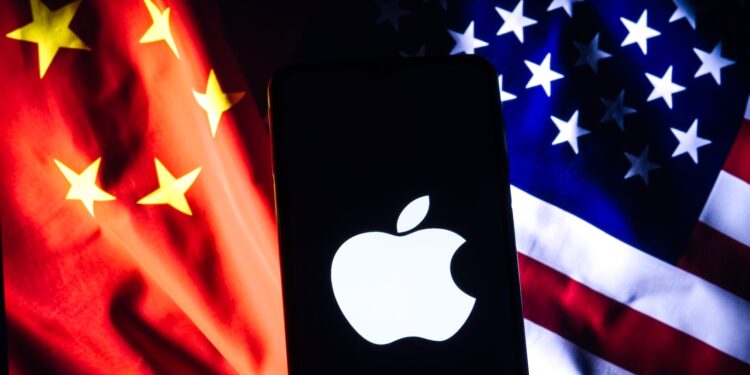iPhone shipments from China to the US fell to their lowest level since 2011 in April. According to recent customs data, smartphone exports have plummeted dramatically—a clear sign of how political tensions and new production strategies are changing global supply chains. This is a turning point for Apple, and for US users, perhaps a clue as to where the next iPhone will come from.
Most iPhones sold worldwide currently come from Chinese factories. But dependence on a single production country carries risks, especially in times of trade conflicts. China and the US have been engaged in an economic power struggle for years – now, for the first time, this is having a major impact on iPhone supply. At the same time, Apple is significantly increasing its production in India, while politicians like Donald Trump are openly interfering in this development.
iPhone exports from China fall to record low
In April, exports of smartphones from China to the US fell by 72 percent, according to Bloomberg . The export value was only around 700 million US dollars – the lowest since 2011. By comparison, total Chinese shipments of goods to the US fell by 21 percent in the same period. The iPhone sector has therefore been hit much harder than average. This decline is a direct result of the trade dispute between China and the US. The Trump administration's aggressive tariff policy has left its mark, in particular. At its peak, Chinese electronics products, including smartphones, were subject to tariffs of up to 145 percent. Such levies make imports unattractive for companies like Apple and encourage the search for alternative production locations.
Apple relocates iPhone production to India
Apple has already responded to these developments. In the last fiscal year, the company had iPhones worth $22 billion produced in India. This represents an increase of almost 60 percent over the previous year. The strategy behind this is clear: Apple wants to make production less dependent on China while maintaining supply security in the US. The goal is to import a large portion of the iPhones sold in the US from India by the end of next year. This will create a new production base that could replace or at least complement China in the long term.
Trump criticizes Apple's India expansion
During a state visit to Qatar, US President Donald Trump publicly criticized Apple's plans. He said he had spoken with Apple CEO Tim Cook about the issue and asked him to stop the expansion of production in India. He said:
I had a small problem with Tim Cook yesterday. He's building everywhere in India.
The background to these statements is apparently Trump's desire to promote American manufacturing or avoid a rush into economic dependence on China. In any case, this shows that the discussion surrounding iPhone production is no longer just economically charged, but also politically charged.
Apple no longer wants one-sided dependence
Apple CEO Tim Cook made a clear statement about supply chain diversification at the company's recent earnings conference. He stated that concentrating all production in a single country would be too risky. Therefore, Apple had already begun relocating certain parts of its supply chain to other locations some time ago. Cook left open the extent of this process, but clarified that this path could continue in the future.
iPhone: Apple sets the course for new production sites
The numbers clearly show: iPhone production is at a turning point. China is losing importance, India is gaining. For Apple, this is a strategic move, and for the US, a political issue. For you as a user, this primarily means: Your iPhone may no longer come from China in the future, but from India – with potential impacts on delivery times, production costs, and perhaps even quality. What's crucial is that Apple diversifies and tries to mitigate geopolitical risks. What happens today influences the iPhones of tomorrow. (Image: Shutterstock / Below the Sky)
- Apple manager O'Brien again included in Fortune ranking
- Apple commissions in focus: Report suggests change of course
- Apple may have to relist Fortnite in the US store





